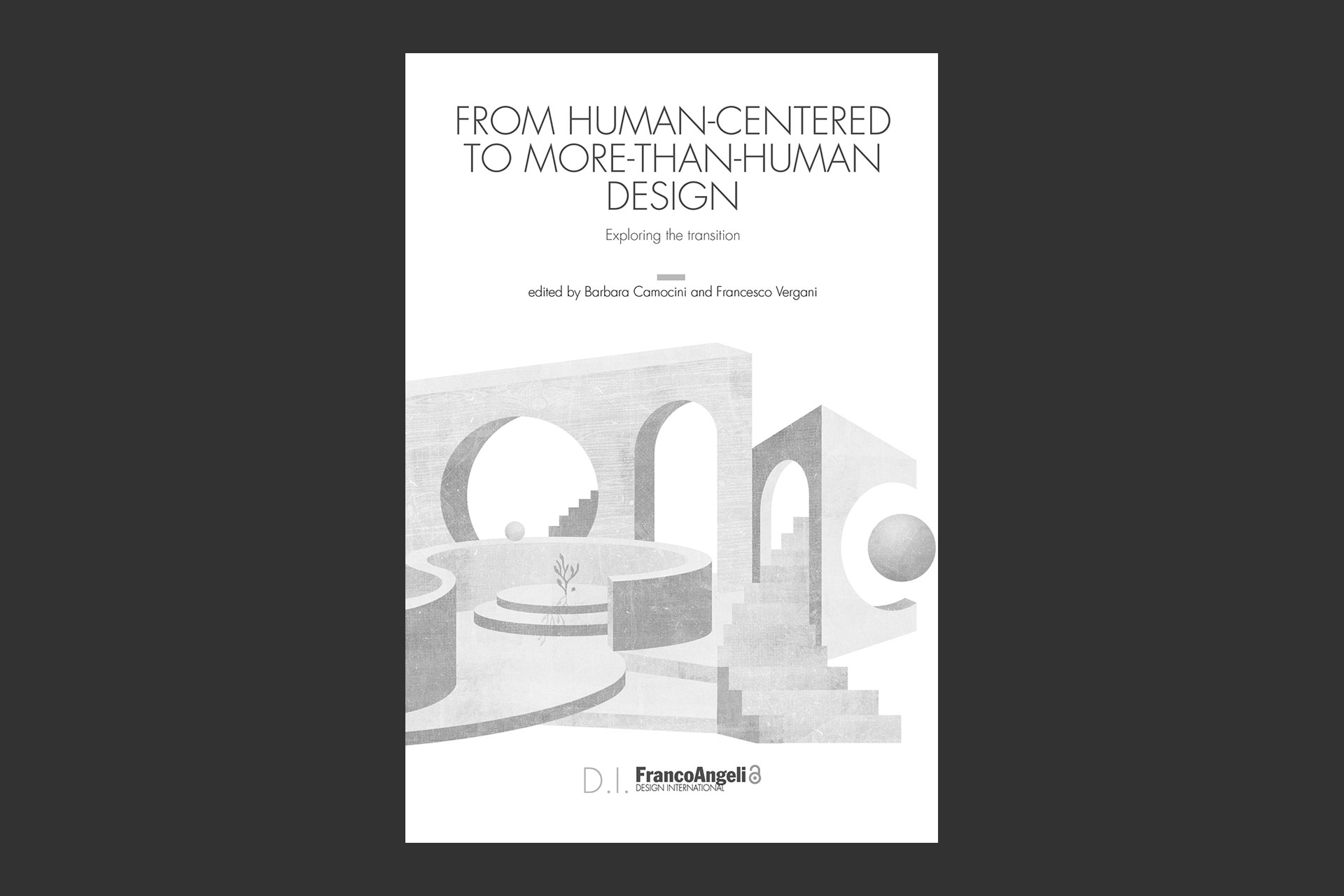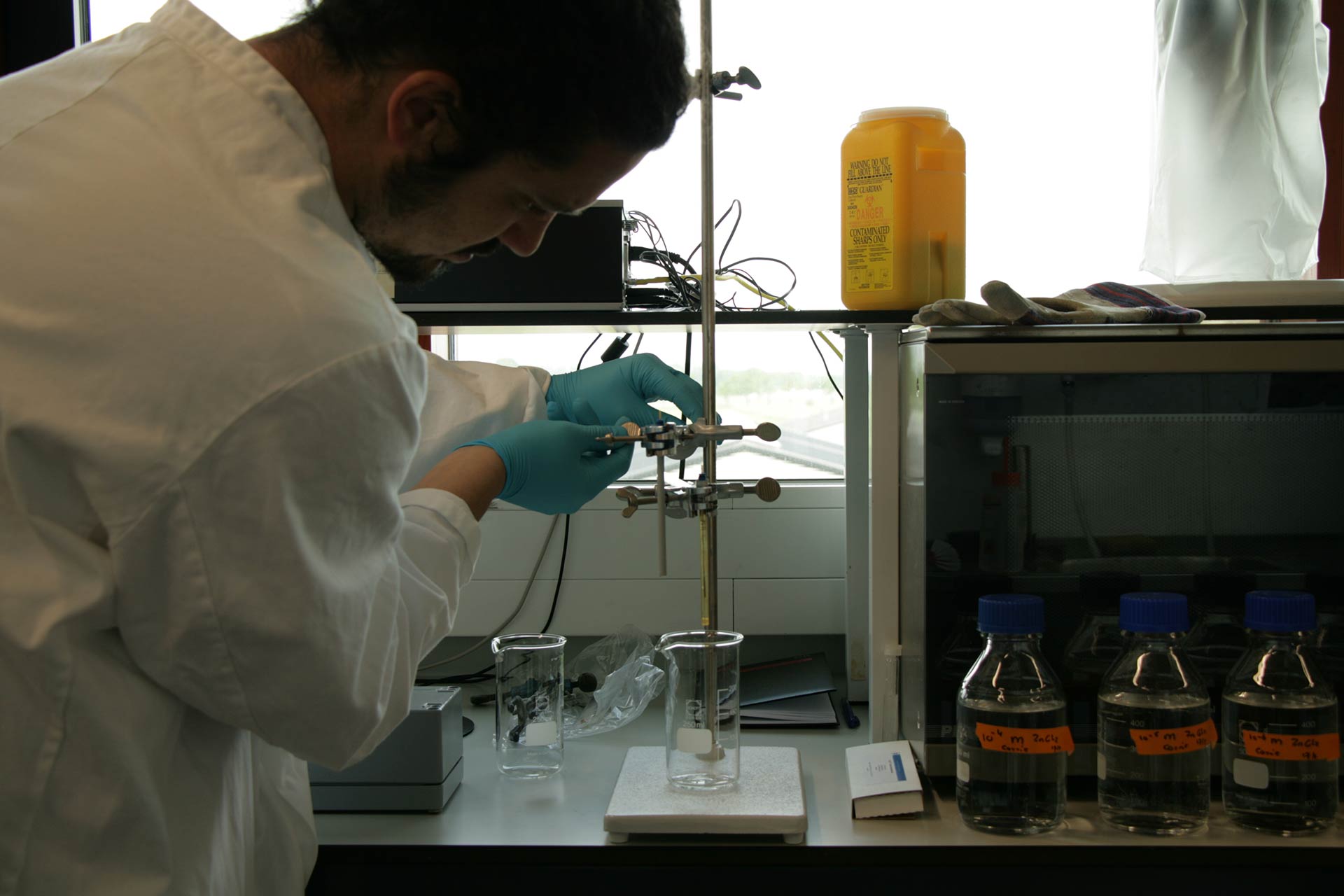 F.005
F.005
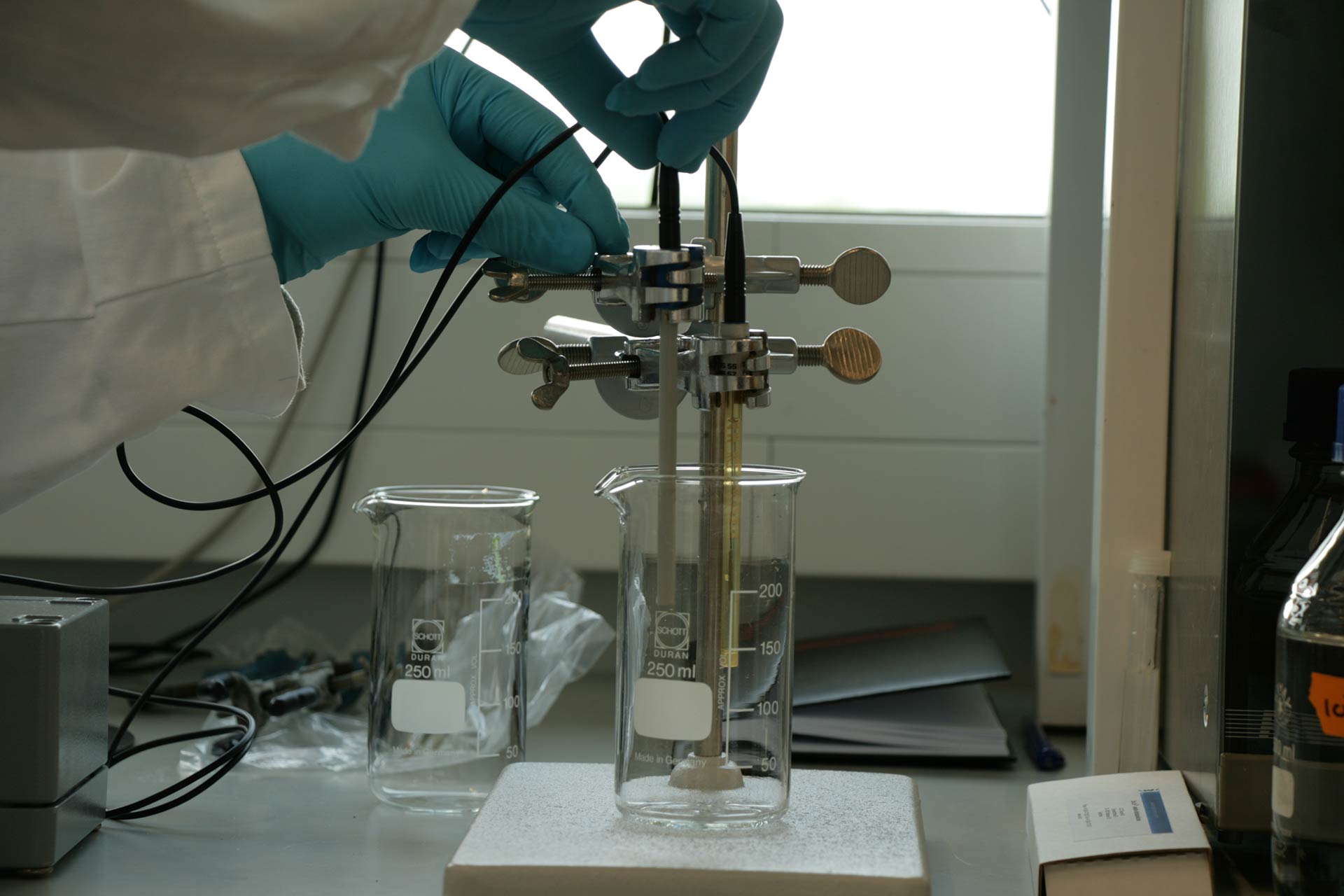 F.007
F.007
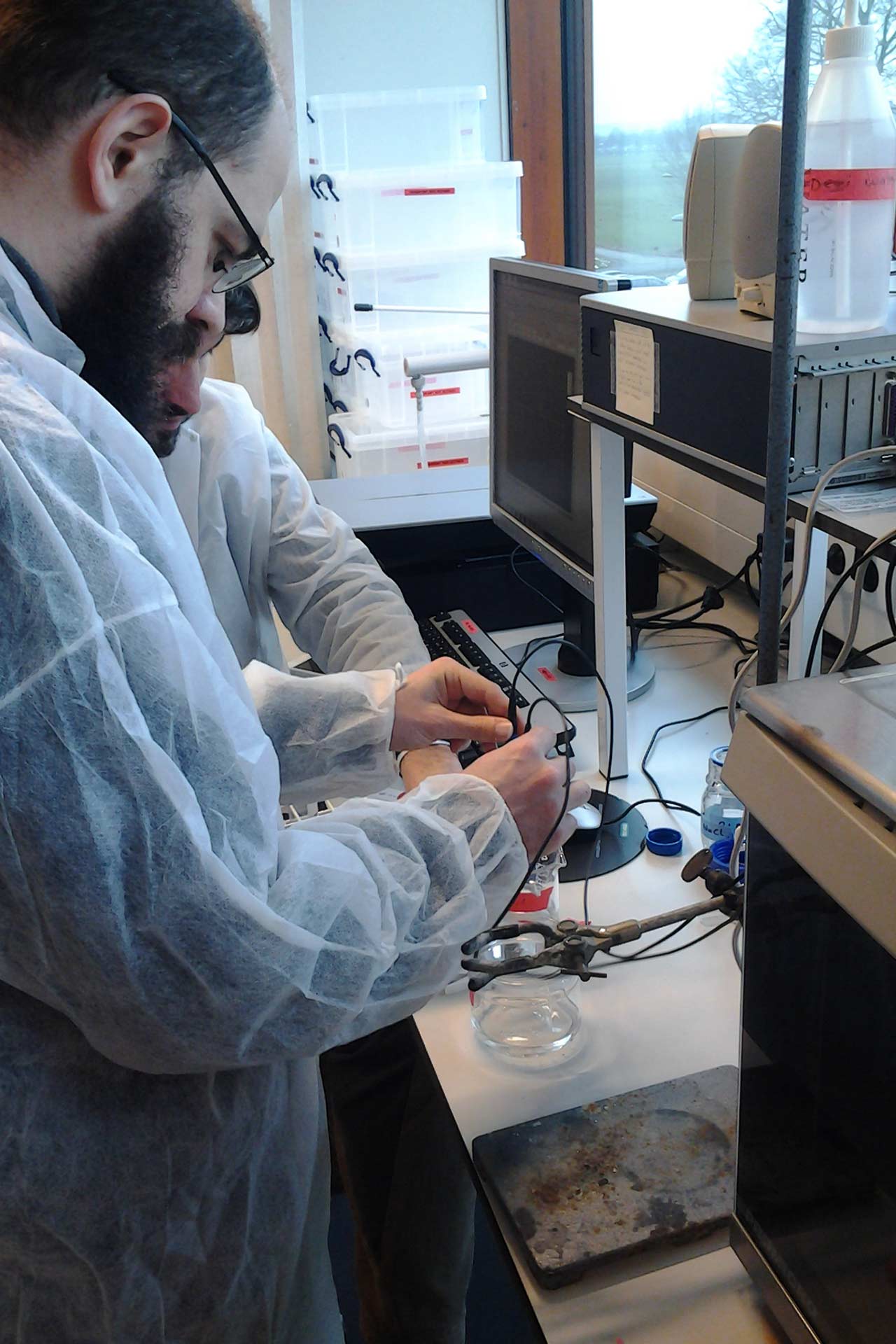 F.004
F.004
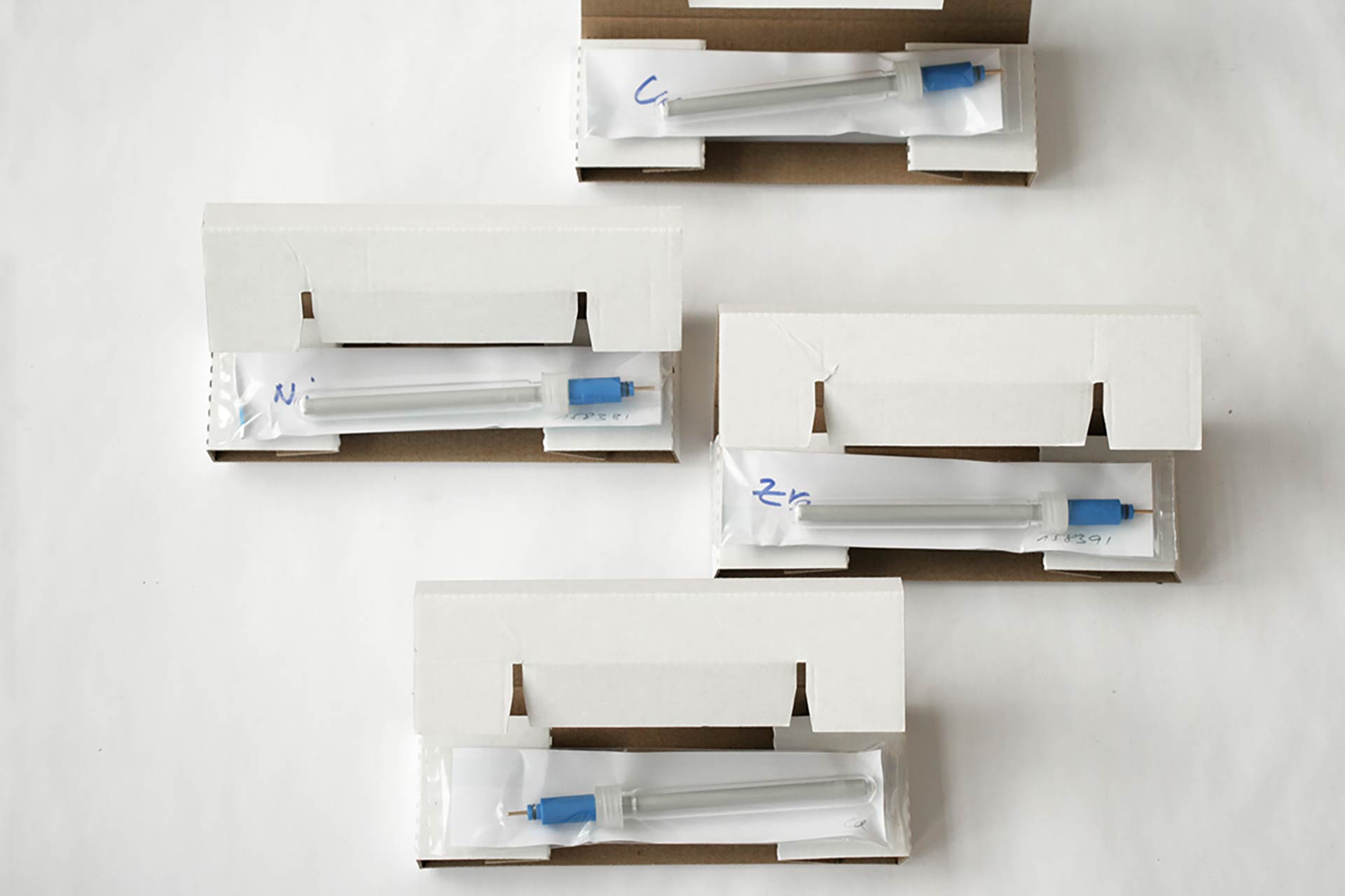 F.003
F.003
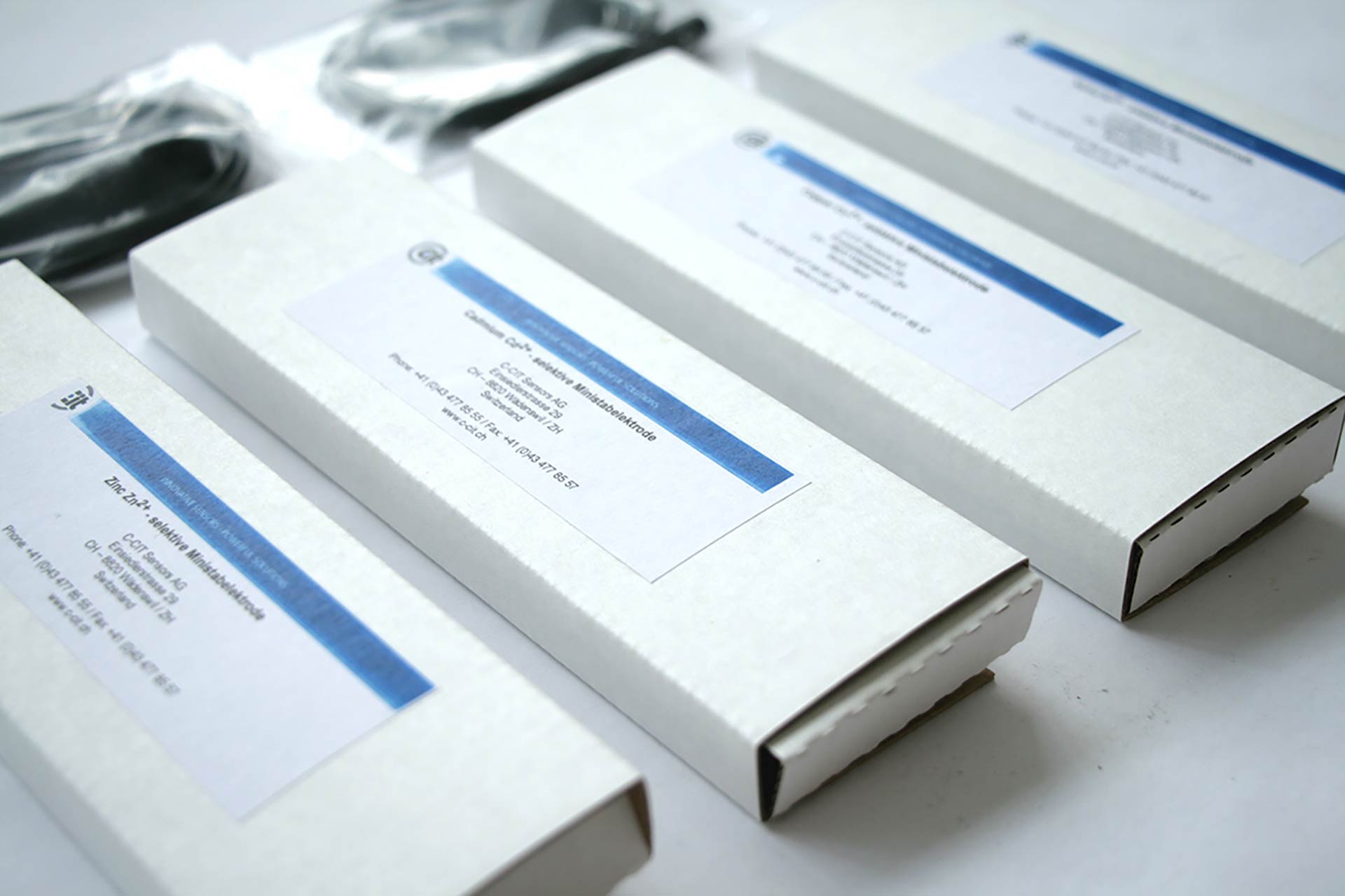 F.002
F.002
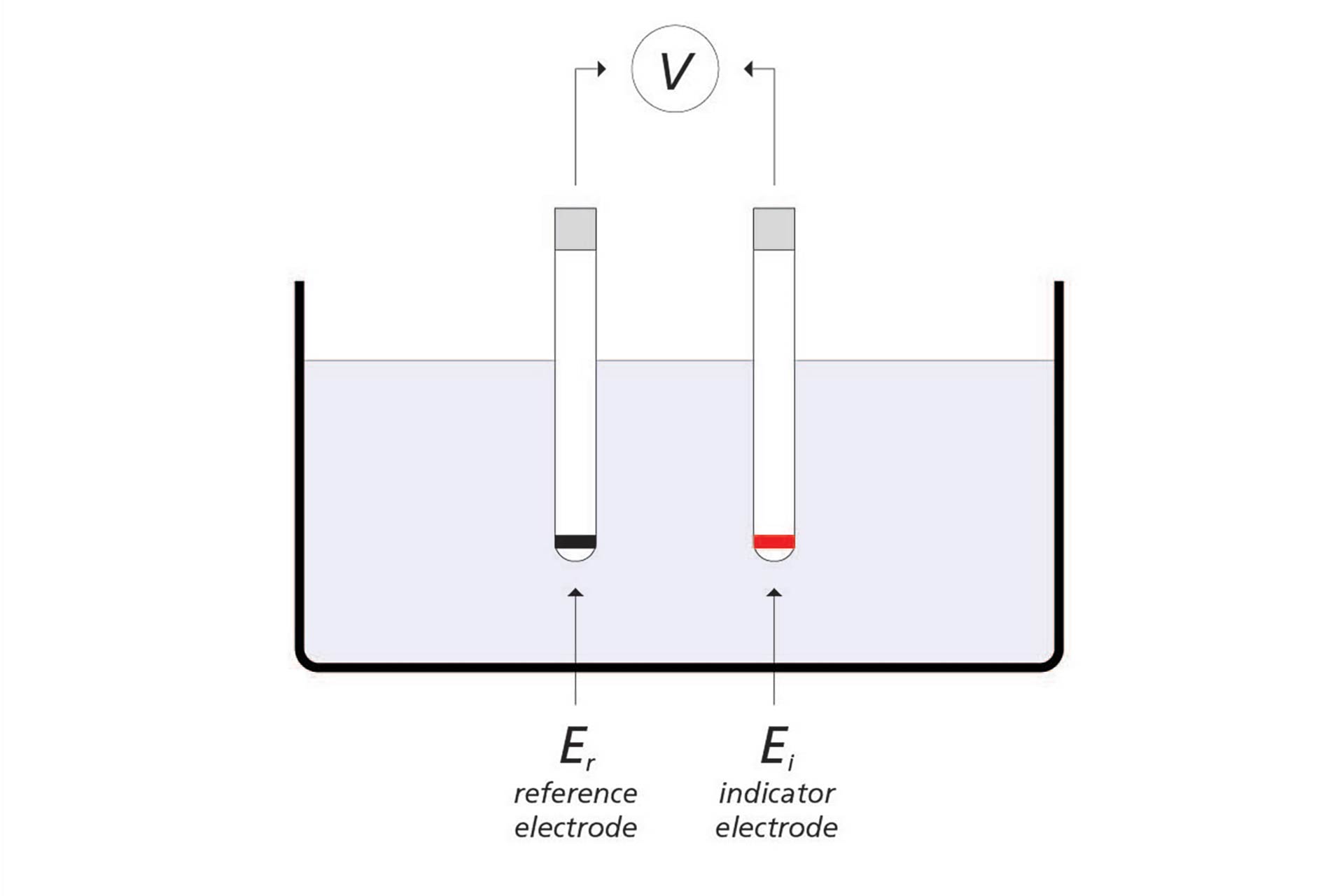 F.001
F.001
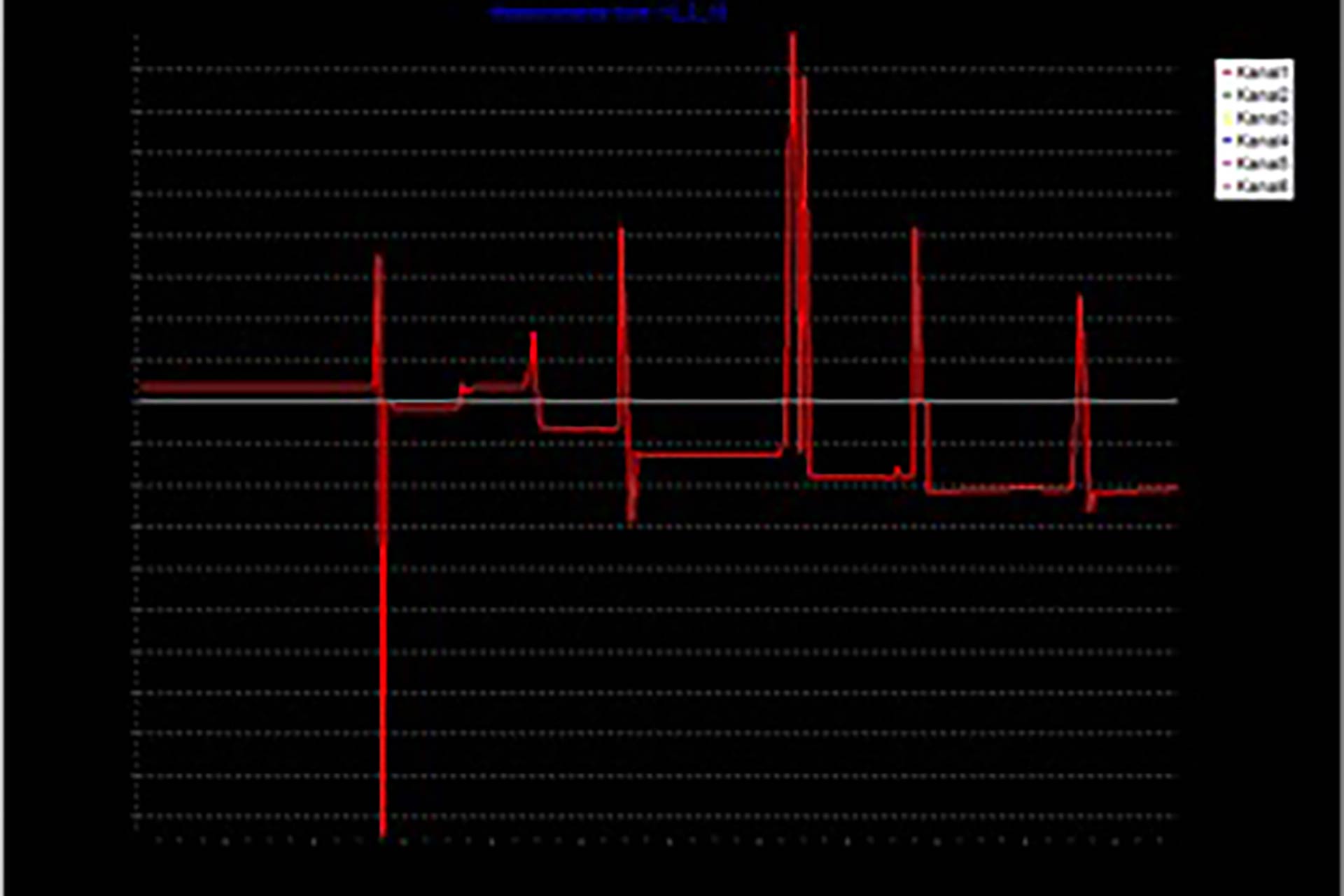 F.006
F.006
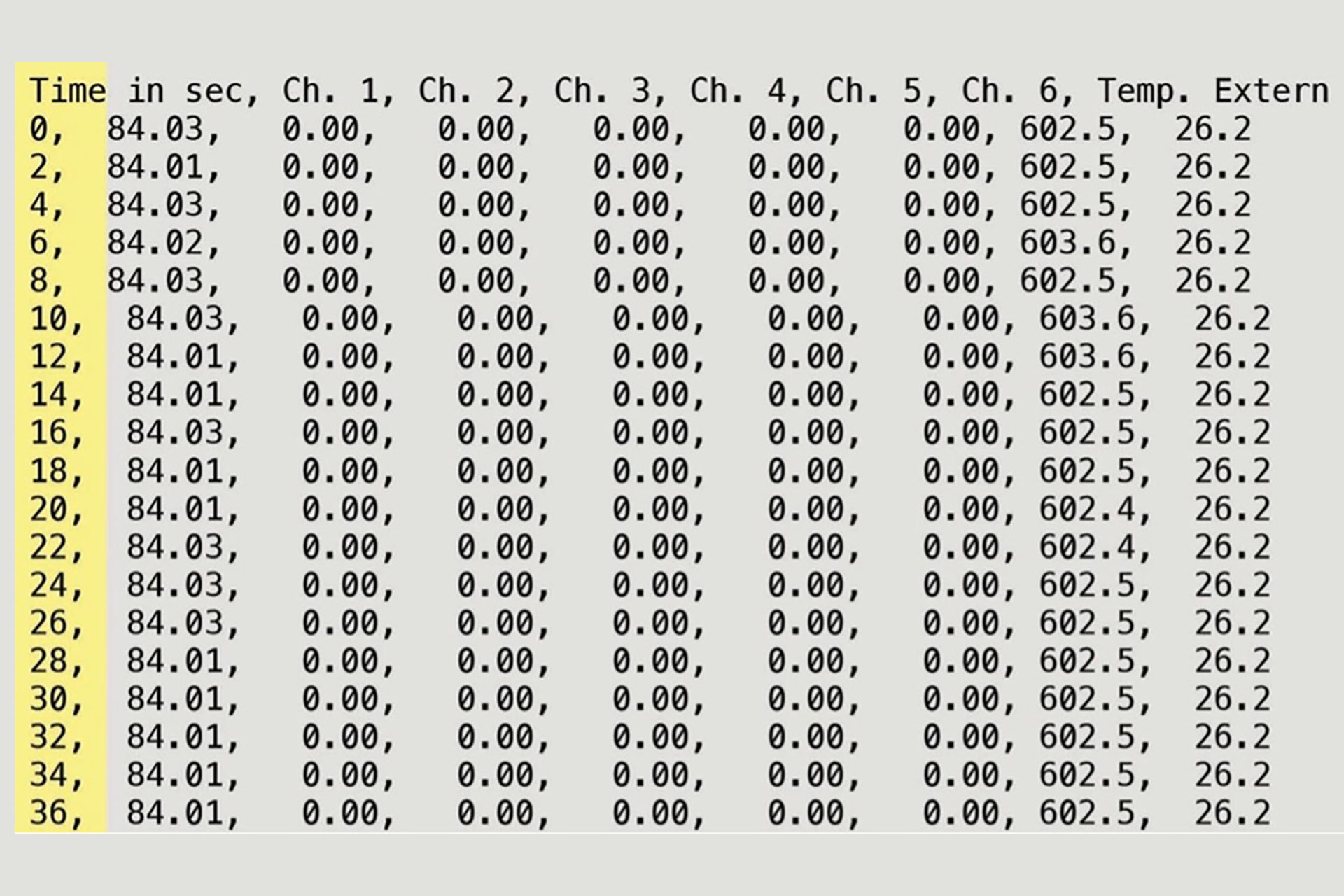 F.003
F.003
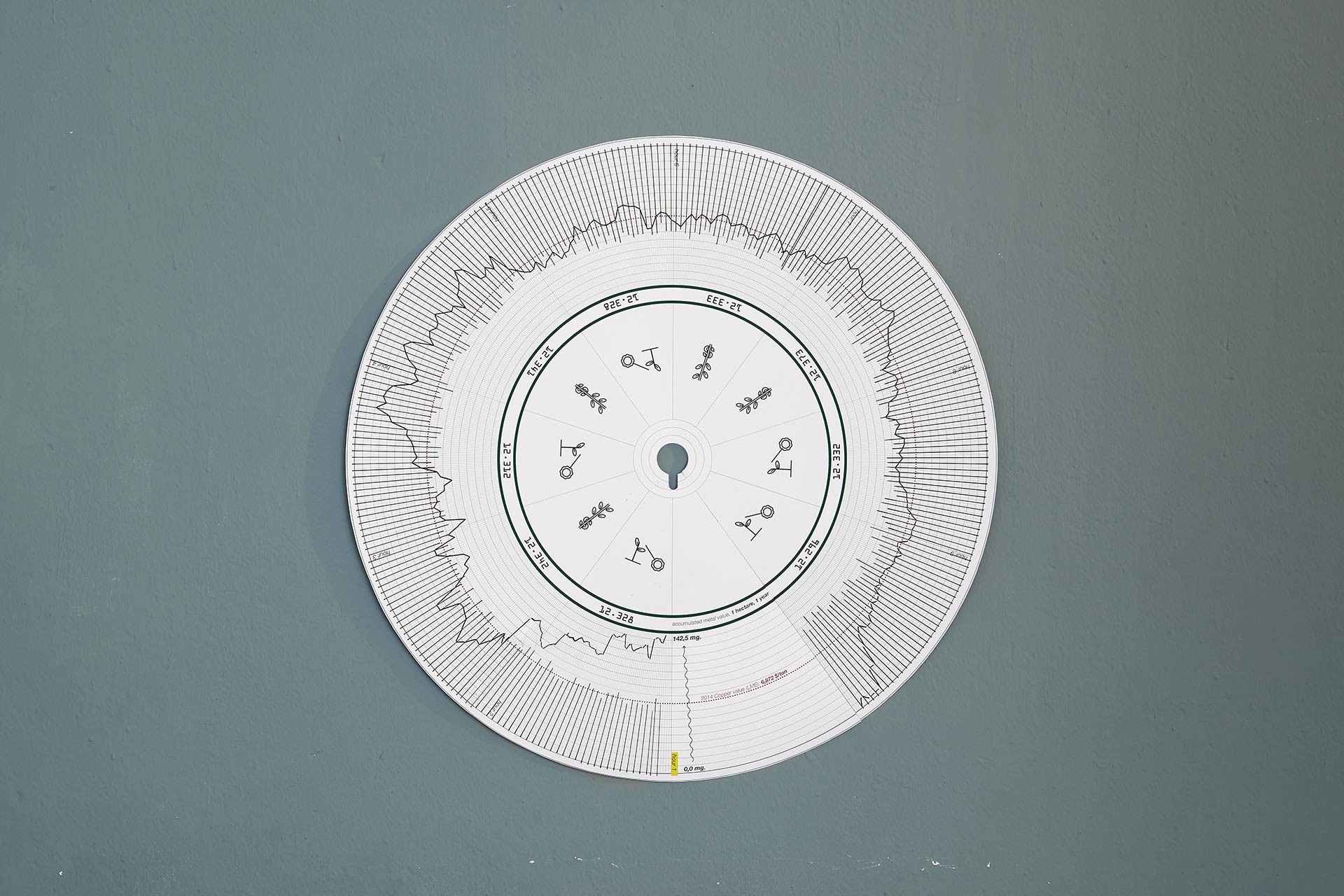 F.007
F.007
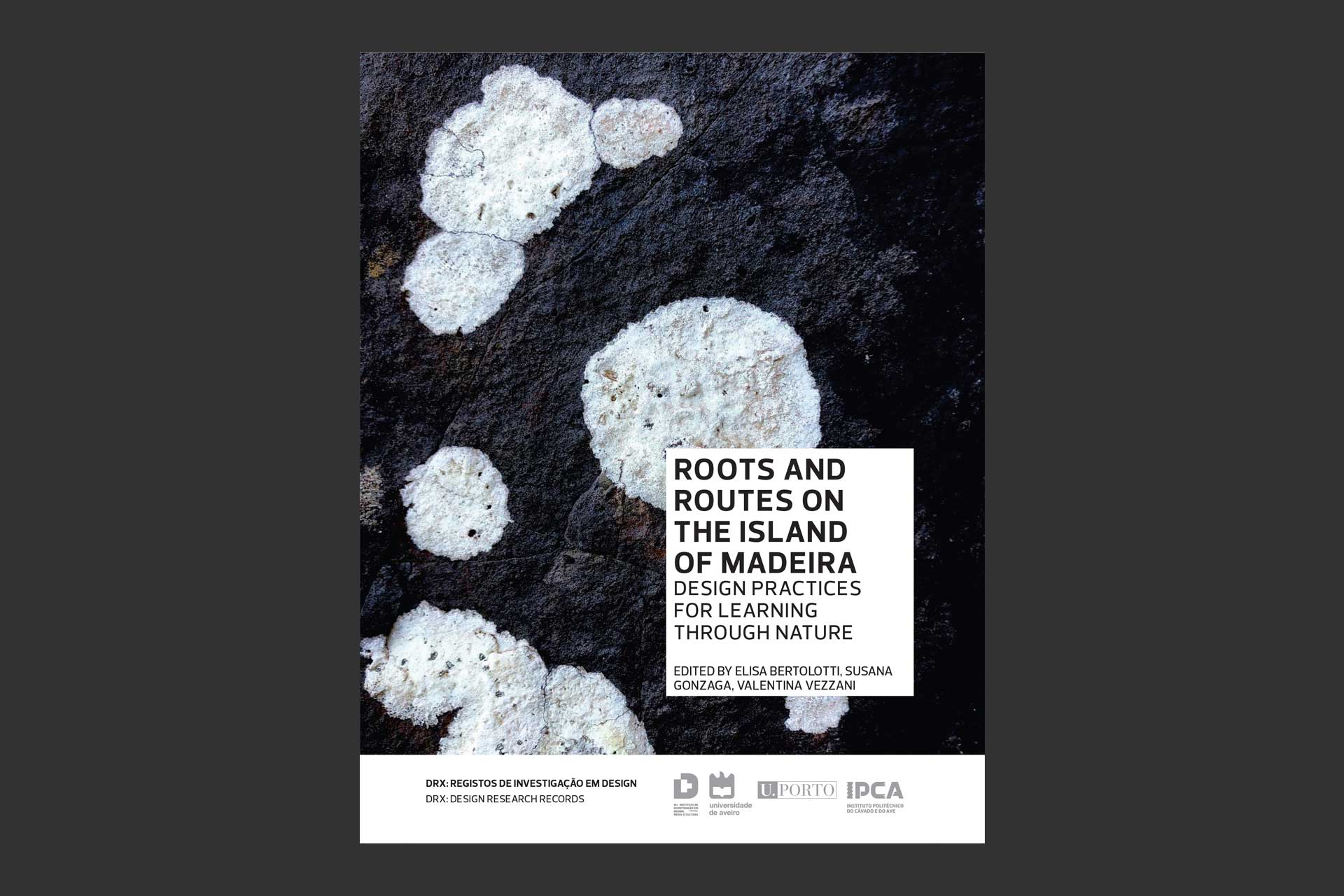 F.008
F.008
W.002
Roots and Routes on the Island of Madeira
When Design meets Biology: the Making of a Sensor Assemblage for Monitoring Phytoremediation
This paper chronicles and reflects on the processes and the meanings of a project titled GeoMerce. GeoMerce is a project of speculative design that creates a narrative based on the scientific notion of phytomining, the activity of extracting metals from the soil using plants. The narrative of the project generates a scenario in which agriculture and finance blend with each other. The project brought together a diverse network of professionals ranging from biologists, technologists, financial advisors, tinkerers, videomakers, enabling an exchange of voices that otherwise would have not occurred. Besides the scientific and technical challenges posed by GeoMerce, the authors of this paper reflect on the critical framework that set the basis for such a complex project. In fact, while GeoMerce seems to hint at the possibility of a bright and positive future, it also casts the shadows of a dystopian scenario in which financial profit and actual or speculative monetary value determine every aspect of our world, including nature and our relationship with it. In this sense, GeoMerce serves as a trojan horse that first seduces the viewer with the promises of a rising Green Capitalism; while on the other hand it reveals the horror of a world where nature is just another financial asset.
Words
In April 2014, the Dutch Creative Industries Fund awarded me a research grant to develop transdisciplinary work in collaboration with international scientific partners (Stimuleringsfonds, 2015). That grant was my opportunity to delve for the first time, as a designer, into the world of plant communication and learn to work with living flora. Back at the time, I had one focus: that of exploring ways to actively engage plants in design processes, treating them as subjects-to-design-with, rather than passive entities to just move, water, or transplant from one place to another. Using sensors seemed to me a good way to facilitate and enable those processes. Sensors -when assembled with software and electronics, do not just convert stimuli into electrical and digital signals. As suggested from Gabrys (2006), they also concretize actors, environments and environmental relations (Gabrys, 2016, p. 4), and open opportunities for more-than-human narratives that consider events happening at scales and speeds otherwise undetectable to our eyes.
Between November and December 2014, I spent four weeks in two labs of Plant Sciences, one based in Florence, Italy, the other based in Wageningen, the Netherlands, to explore topics and opportunities of collaborative research work with scientists. My intention was to set out on a journey with plant scholars, following their fieldwork and daily lab work, interviewing them, and exchanging thoughts. The engagement of labs was fundamental for at least two reasons. First, it deepened my understanding of plant physiology, by providing technological support to sense and monitor plant behaviours through different lab activities; second, it helped me understanding how and through what processes plant research could intersect with design practice. Being regarded as locus of scientific production, labs begun to open interesting opportunities for artists and designers (see, for instance, Kerridge 2015, 93), however the questions of how research is done together and in what ways individual expectations become aligned throughout the process are not yet fully answered.
This chapter chronicles the discussion and production of a sensing technology, to be used within a speculative design installation, and aimed at monitoring the physiological processes of some plant species in response to environmental contamination. Extracts from interviews with plant scientists and technology producers, and accounts of lab experiments are used to shed light on the transdisciplinary practices that motivated the design process, which ultimately led to producing and testing the sensor assemblage.
The International Laboratory of Plant Neurobiology (LINV) is a plant sciences research unit that belongs to Università di Firenze (Italy) and is one of the two labs where my research took place. When I first visited the institution in 2014, the research team involved students and scholars who conducted experimental work on plants, using the methods of Plant Neurobiology (PN). PN focuses on studying how plants “perceive their circumstances and respond to environmental input in an integrated fashion, considering the combined molecular, chemical and electrical components of intercellular signalling (Brenner et al., 2006, p. 413). PN differs from other research fields in that its goal is to shed light on the structure of the information network that exists within plants. PN scholars make recurrent use of the expression ‘plant intelligence’, often in association with terms such as ‘decision’, ‘processing’ and ‘action’, to underline that plants respond to the environment through integrated modes of signalling and behaviour.
The second lab involved in the project belongs to the department of Plant Genetics, one of the eighteen divisions forming the plant sciences group of the University of Wageningen (The Netherlands). Here, plant scientists explore the principles of plant adaptation to the abiotic environment, focusing on the stress tolerance mechanisms involved in such processes. Scientists working for this lab have one main specialisation, that is, plant genetics and the study of causes and effects of genetic variation within different species (WUR, 2010).
C-CIT is a Swiss biotech company, established in 2002 in Wädenswil (Switzerland). It designs, produces, and markets sensors and enzyme-based technologies for monitoring cell cultures and different aqueous fluids. Back at that time, the company had an active history of collaborations with several international partners, such as MIT, The University of Zurich and other institutions. The collaboration with C-CIT was linked to the production and testing of a bespoke sensor assemblage, consisting of one series of Ion Selective Electrodes and one potentiometer, and to the provision of technological support for handling and using the equipment.
Even though my residency in the labs was supposed to culminate with a design outcome of sort, the topic, mutual expectations, and goals were not stated at the very beginning but taken as research matter to be co-explored through interviews, observations, and lab experiments, in view of opening arguments and possible directions for design work. At LINV, I followed plant scientists at work for about two weeks and interviewed them individually once I completed my first round of observations. The purpose was not so much that of discussing scientific findings, but more of facilitating the emergence of subjective narrations, through the stories and experiences that each scientist went through, after years -sometimes decades of work in one specific research field and on one particular vegetal subject. Such perspectives – which rarely appear in academic work, often account for the intimate aspects of the lived experiences, suggesting that -within the course of a scientific study, there are also elements of sociality and multispecies relationality that accompany and co-exist with lab and field work.
This way of interviewing scientists has some advantages. One is that it can disclose anecdotes that enliven lab work with interpretations and “thick descriptions” (Geertz, 1973). This -while adding valuable details, does make scientific research more understandable and socially permeable. Second, by spacing beyond scientific discourses, it also helps to link the sphere of the biological with the cultural, ethical, and political aspects that are -or could be linked with the study of a particular species. When co-discussed with biologists, such links can then become incipits for reframing scientific facts into foundations for speculative scenarios that encompass the sphere of the alternative and that of the possible.
Drawing from the instance of an interview with a scientist at LINV, this section provides an understanding of how our conversation led to convert plant research into design narrative. The scholar I spoke to is an Agronomist specialized in phytoremediation, a research field that explores the ability of certain plants to absorb heavy metals from contaminated soil. When I asked the scientist to tell me about his work, he first described it as:
“a multidisciplinary research area, whose aims is about [the use of plants to] find a remedy to global changes [and] the damages that occurred over the last 100-150 years of unbridled industrialization and intensive use of environmental resources” (Gatto, 2020)
The account he provided of his practice, however, did not simply refer to phytoremediation as environmental research about plants. Building on previous experiences, the scientist contended about its value as a socio-technical instrument for community engagement, serving:
“not only the environment, but also the rehabilitation, from a social perspective, of peripheries affected from urban degradation and social issues. People in the neighbourhood were called to give us a hand. There were projects related to the rehabilitation and valorisation of the individual: unemployed and even people with drug addiction were involved in the management of the project […]. There was need for vigilance, so people were also accountable to the territory they lived in. This required creativity and created creativity, in an interesting circuit of exchange between the biologist – or the forest guard in the specific case, plants and people” (Gatto, 2020)
Although researchers have long spoken of plants as communities (see, for instance, Lortie et al., 2004; Watt, 1947) the idea that humans can be part of them is usually not considered in scientific literature. The scientist’s representation of phytoremediation suggested therefore alternatives to more traditional scientific readings. Here, the scientist’s experience of the process in the field was narrated as an opportunity for multimodal engagement, which required the support of different actors (for instance, human and vegetal) and an understanding of their respective ways of inhabiting the land.
Another provoking element in our conversation concerned how phytoremediation research provided arguments for speculations. In the following back and forth, for instance, the scientist introduced the process of “Phytomining” (Sheoran et al., 2009, 2013), a technological application of phytoremediation, which allows to ‘harvest’ part of the hyperaccumulator’s biomass, burn it and recover from the ashes the metal previously contained in the vegetal tissues:
Agronomist: […] What we hope is that most of the pollutants remain inside the stems, because, then we can harvest the plant […], cut it and find the soil pollutant inside the biomass.
Designer: And where’s the advantage?
Agronomist: The advantage is that, on a larger scale, when you have collected the biomass, you have practically gathered a …
Designer: A capital?
Agronomist: Yes […], if the pollutants are metals, the biomass can be burned and from […] these ashes you can get back the metal in its original pure form. This was done with Cadmium […]. The Swedes used willows to recover Cadmium, […], which has a market value almost equal to gold. So, an environmental problem could be turned into an economic resource, if you want. (Gatto, 2020)
Discussing environmental contamination as a ‘capital’ and ‘resource’ linked phytomining research with the realm of finance and economics, providing elements for framing a scenario of fictional inquiry. For instance, the term ‘capital’, in that context, evoked readings of plant metabolism that superseded the just biological act and encompassed technical agentic forces such as that of metal value and trading. Since most of the accumulated metals are in fact listed on global financial markets, hyperaccumulator plants could be reimagined as miners of polluted soil, and agriculture as a speculative practice dependant on both biologic and economic factors.
In the instance of the transdisciplinary work here presented, bringing into conversation the plant process of metal uptake and the human construction of mineral value turned phytomining research into a speculative plot that formed the basis of the project. As seen, engaging scientists from the very beginning of such processes -for instance by asking them to account for personal experiences and anecdotes, suggested to facilitate unexpected narratives that blend empirical and speculative framings.
The time spent in the labs led to conceptualise Geomerce, an itinerant installation that explores the convergence of bio-financial processes, and how those might help re-thinking the value of contaminated territories. The installation consists of a series of hydroponic units accommodating different hyperaccumulator species with roots immersed in a hydroponic solution of water and heavy metals. Each unit was conceived to monitor in real-time the phytoextraction process of the plants, crossing those data with the real-time value of the correspondent metal in the London Metal Exchange market. The resulting data is then transmitted to a series of plotting devices, which print that information in the form of infographics, in real-time and for a period of 9 hours. After each hour of performance, an algorithm combines those data, printing a digit that quantifies, in US dollars, the speculative value-per-year of a hectare of contaminated soil, assuming it was ‘mined’ from hyperaccumulating flora.
During my interactions at LINV, an important element of discussion concerned how to design the sensor assemblage to monitor the hyperaccumulators’ extraction process. Although plant neurobiologists have been long occupied with the study of plants as perceptive and active beings (Calvo, 2016, p. 3), back at the time there was no equipment commercially available -or used in the lab, for that specific purpose. One of the issues concerns the difficulty of ‘wiring’ hyperaccumulator plants, as the average size of sensors makes it hard to plug them on their body, usually too thin and fragile to support such applications. The other problem concerned the complexity of effectively detecting metal particles moving inside a plant’s vascular system, as the process presents questions and variables that complicate the monitoring process. How to then sense the behaviors of those plants effectively, without compromising their vitality and well-being? This question motivated a second phase of interactions with the collaborating scientists. In the following extract from an interview with a biologist at LINV, specialized in physiological mechanisms of metal uptake, we advanced opportunities for alternative monitoring process:
Designer: Have you ever explored if the sap that flows inside a plant’s vascular network can reveal the amount of metal it contains?
Biologist: I didn’t know that you could do that.
Designer: […] what if, while the sap flows, bringing along the metal, we could map that process through a sensor? […] We could understand the extraction performance of that plant… I am thinking of this as a way of representing the extraction abilities of those plants. It would be great to visualize that.
Biologist: […] We never thought of trying that, but it could be interesting. When you cut off a branch, the sap flows out. That could then be sampled with a pipe and its content analysed. However, experiments on metal-tolerance could also be done on the short term in hydroponic solutions [using] a controlled abduction: you put a litre of nutrient in a jar and add a quantity of Nickel [and monitor the changes]. Maybe you could use a plant that can grow in hydroponic […] (Gatto, 2020)
In suggesting focusing on the substrate rather than directly on the plant, the biologist shifted the target of monitoring. Her proposal brought into the conversation a different setup, with hyperaccumulators sinking their roots in a controlled solution of water and heavy metals. According to the biologist, monitoring the substrate meant indirectly tracking a hyperaccumulator’s physiological performance, through the changes produced by its organs on the hydroponic medium: any metal missing from the liquid would be arguably equal to that absorbed by the plants. This shift in focus was important because it acknowledged not just the role of the plant within the phytoextraction process, but also that of the environment within which plants exert their agentic forces . The environment can inform how we design sensing technologies and how such equipment operates in return, contributing to create new processes and environmental conditions. Jennifer Gabrys, in Program Earth (Gabrys, 2016), explains the value of “attending to and working with technologies that would animate and monitor environments”, as the process itself can lead to concretizing environmental relationships and help us comprehending the nature of their mixing. In other words, sensors do not simply ‘monitor’; they also shape and are shaped by the environment, affecting our understanding of it, and the actors and processes who constitute it.
In our project, the composition of the medium for the hydroponic units was negotiated on the base of scientific understandings of both, soil contaminants and plants’ hyperaccumulation mechanisms. This knowledge was made available by the collaborating scientists, who worked with species that were sampled from nearby territories affected by specific configurations of heavy metals. Accessing this knowledge provided means to both, emulate and animate the contaminated environment. In the first case, the provided expertise helped to replicate the features of polluted soils into their respective aqueous forms. Liquid mediums, compared to solids, facilitate the deployment of sensors and the following design of monitoring protocols, hence turning a hyperaccumulator’s site into sense-able matter. This has multiple effects, one of the most valuable is that sense-able environments open to multimodal forms of representation. In the case of Geomerce, for instance, inert soil contaminants -usually invisible and untraceable to the naked eye, could be animated, becoming lively and actionable through the plants’ performance.
Actionable environments, or rather their capability of being acted upon by multiple agents, provides opportunities for opening their settings to polyvocal readings, which can then lead to articulate debates, discussions and the emergence of controversies, a feature that aligns with the intention of speculative and critical designers (see, for instance, DiSalvo et al., 2011; Yaneva et al., 2009). As I will discuss in the last section, this also provides opportunities for scientists to expand their research work beyond laboratory settings, making it accessible to and debatable by broader audiences.
The technology developed for Geomerce is based on the use of Ion Selective Electrodes (ISE), consisting of a reference and an indicator electrode, capable to convert the amount of metal dissolved in a liquid into electrical inputs. Once both electrodes are placed into a solution, they form an electrochemical cell sensing variations in potential that is then monitored through a potentiometer.
As most of ISEs are used in areas outside plant and phytomining research, back at the time there was no sensor available to monitor precious metals, hence it was necessary to specially manufacture them. As a general principle, all ISE feature the same components, with one element that differentiate them from one other, that is, the membrane, a thin layer, chemically sensitized to allow only intended ions to travel across its surface. Producing those membranes and testing their sensitivity was one if the objective of our collaboration. That component could in fact allow the monitoring of increase or decrease in metal concentration in Geomerce’s hydroponic units.
The manufacturing of the sensors took place remotely, inside C-CIT’s lab. The company coordinated the production of individual membranes for Nickel, Copper and Zinc, those being minerals commonly absorbed by hyperaccumulators and simultaneously proficiently traded in the financial market. Together with the electrodes, C-CIT provided one potentiometer and technical support during the lab experiments. The testing of the sensors was performed on occasion of two workshops, conducted inside the plant physiology lab of Wageningen University in view of aligning about how to use the equipment.
Being able to work directly inside the lab opened opportunities for us to explore the new technology, how it worked, its limitations, and possible ways around them. In one workshop, for instance, we focused on monitoring protocols. The concept was to try mimicking the plant’s extraction performance in a hydroponic setting. To do so, we filled a glass jar with our hydroponic solution (a mix of distilled water and selected heavy metals), we then immerged the sensors in it; last, we removed one spoon of solution every two minutes, adding and mixing at the same time the same amount of distilled water as a way of diluting the heavy metals’ concentration. Following the software analysis, we noticed a series of red peaks corresponding to the last step of the process. During the workshop, we collectively discussed the reasons for those peaks, concluding that the sensors were probably disturbed by the presence of other metal elements, probably the metallic material of the spoon. This hypothesis, from a design perspective, spawned multiple doubts and concerns. If, on the one side, the sensors seemed to function properly, on the other, the impossibility of adding any minerals other than the heavy metals in question would have deprived the hydroponic medium of essential plant nutrients (e.g. potassium, phosphorus, nitrogen, etc.), thus largely compromising the functioning of Geomerce. The solution was advanced by a lab technician, who suggested to use a hydroponic medium composed of distilled water and a controlled mix of two minerals, capable of providing basic nutrients without disrupting the work of the sensors. We were also suggested to limit the time in which the plants sank the roots in the solution during the performance. The scientist’s assumption was that hyperaccumulators could survive in it for maximum of four days, after which they had to be transferred into a more suitable substrate. Those suggestions led to decisions that had an important impact on the project. For instance, we realised that the installation had to operate within that very time frame, to assure the survival and well-being of the plants involved in the performance.
The fact that designers can explore -together with scientists, possible applications of sensors, monitoring protocols, and emerging technologies is a phenomenon that, in recent times, has been making its way within interdisciplinary design. Science labs, in this sense, can be seen as sites for experimentation and interdisciplinary synergy, coming about as a proper locus for discussing the technical aspects linked to the production of design. Through shared lab work, as suggested earlier, issues and limits of technological assemblies can emerge, leading to discussions where hypotheses for solutions can be collectively addressed and lead to unexpected new applications.
A fundamental aspect in the conceptualization and production of Geomerce was played by the scientists’ and technology producers’ motivation to take part in the design process. The project’s available budget was reserved for prototyping and did not foresee the payment of the partners involved; hence it was important to understand what motivated each of them to collaborate and kept them engaged throughout the entire project’s development.
Understanding expectations is a key element in such collaborations, as it can help bridging disciplinary boundaries, fields, levels and expertise (Borup et al., 2006). For plant scientists, an important aspect in the collaboration concerned the monitoring mechanism put together by Geomerce. During an interview, a researcher at LINV explained that, traditionally, there is one consolidated lab protocol used to study heavy metals’ concentration in hyperaccumulating plants:
Plant Physiologist: “The steps [are] to analyse the composition of the biomass, then roots and leaves”.
Designer: “Always on dead plant cuts?”
Plant Physiologist: “Yes. You sample, dry, wash, and then analyse them. From there you can understand the deposition of a metal concentration” (Gatto, 2020)
Therefore, one feature of the scientist’s account that aligned with my own expectations were potential uses of monitoring devices in the area of phytomining research. The development of a new research protocol that instead of using plant cuts involved the monitoring of living flora was a key motivational aspect for all involved scientists. For instance, in the following interview extract, the director of the plant physiology lab at WUR suggests that Geomerce’s ISE-based technology could become a resource for his team to initiate new research trajectories:
Designer: What value do you see in these kinds of collaboration, between design and science?
Lab Director: Well, of course you’re interested in working on these sensors. So, developing those things, that is also useful for us. It’s a new context, so you never know what this could bring. Unexpected things could come out of this, which is also a reason.
Designer: Could the sensors become a resource for your lab?
Lab Director: Yes, that could be, if they work. So far, there were no proper Zinc, or Cadmium, or Nickel sensors. That would be interesting for us, yes.
Designer: If you would have resources to use the technology, how would you do that?
Lab Director: As first, it would be interesting to measure the concentration of these elements in solutions, such as solution of hydroponics or extracts […] measuring how much metals are still in the solution after a period of time. (Gatto, 2020)
The fact that, for the lab director, developing the sensors “could be useful” as it might lead to “unexpected things” underlines that scientific and technological changes are attractive as they generate interest and might even trigger new resources and investments (Borup et al., 2006). Technological expectations, however, are not the only ones involved in interdisciplinary collaborations. The tech company C-CIT, for instance, argued that another key motivational factor concerned their own return in terms of exposure and media attention. The company’s director referred to these as “soft factors”, suggesting that collaborating to the design of Geomerce might have benefited the company in that direction:
Tech Producer: Honestly this project is not and will never become a project where the huge money lies. Phytomining will always be, I assume, a rather small market for analysis, but this is a very “pressish” project, you know…
Designer: What do you mean?
Tech Producer: Today, if we can put on our website: “environmental project, protecting soil, protecting water…”, and stuff like this, it’s always a good message to the outside world.
Designer: To the outside, meaning…?
Tech Producer: To the people, to our customers. Companies always have clients, but the client is not the only paying customer, you know. When BP does a huge damage with oil somewhere in the sea, not only BP customers do protest, but the whole world. That’s a message given out and the picture you built. And this is at least as important as the paying customer, because with this picture you lose or win new paying customers.
Designer: Are you saying that your participation in this project might help to positions yourself, that you could position your company in relation to issues of contamination or pollution?
Tech Producer: That we offer solutions to help to protect! With our products, we also try to define “soft factors” that we solve […]. We have a lot of soft factors. For instance, since we have a cheap production process, one is that we help to reduce costs in the health sector. That’s a soft message for everyone, for the customer outside. The image of a company is very important today. (Gatto, 2020)
Media visibility is therefore another key aspect that easily line up participants, especially when the prominent message expressed by those works can be largely read in positive ways. The tech producer, for instance, argued that such messages trigger improvements in business reputation, thus contributing to enhance the collective perception of a company or institution.
While it is important that individual expectations find alignments, that process is not always linear nor smooth. At times, expectations need to be negotiated and re-arranged in order to line up. For instance, while I discussed the sensitivity of the new electrodes with the tech company, we both realized that our respective ideas about the sensor’s efficiency was divergent. I expected Geomerce to produce accurate data, while the company was more focused on representing trends:
Tech Producer: […] what I do understand, is that you want to see the reduction of ions in the soil, therefore it’s not that important that the sensors are very precise, you just want to see a decrease of ions. If that doesn’t decrease anymore, you can assume that the plant can’t uptake anymore metal. These are always application that we love, because what we want to see is not a matter of precision, but a matter of trend. Therefore, I think these sensors are a good solution, except for when we are at the end of the detection limit of the sensor, after which you would not see anything anyhow… The limit for me is that ions like Zinc, for instance, are not highly concentrated in soil, therefore ISEs, which have a detection limit of 10-5, 10-6, 10-7 (molar), have a little limitation (Gatto, 2020).
The lower-than-expected sensitivity of the membranes posed question marks during the design process, as more metals needed to be added to the hydroponic medium to reach concentrations above the detection limit; too much metal, however, would have jeopardised the well-being of the plants. Rearranging individual expectations implied finding a compromise in terms of technological efficiency, hence instead of monitoring the solution in real-time, we decided to do that on time intervals of 2 minutes, for the sensors to track any relevant change.
In recent years, work in science and technology studies provided evidence of the importance of expectations in determining new technological and scientific trajectories (see, for instance, Harro van & Rip, 1998). As seen in this section, expectations seem to play an important role also in relation to socio-cultural aspects, particularly those linked to the function of media messages in generating public visibility, market positioning and economic wealth. How to quantify that impact, however, remains to be clarified, especially in view of understanding whether media visibility can be considered a usable tool to explore the dynamic of expectations within interdisciplinary projects.
In recent years designers started to work with biologists to explore future trajectories for emerging science and technologies, highlighting the value of such collaborations. The project presented in this paper shed light on the importance of doing shared work, through which multiple knowledges can be brought together from the very beginning of the design process. As seen, interdisciplinary synergy can emerge from within the collaboration, thanks to instruments such as interviews, workshops, lab experiments and round tables. Engaging scientists and asking them to account for personal anecdotes as part of the process suggested to help building narratives that blend empirical and speculative framings. In this sense, the lab positions itself as an excellent interdisciplinary locus, encouraging discussions and exchanges on the use of techno-scientific elements serving the project development.
The research done on occasion of Geomerce suggested that one important element to maintain participants engaged concerns the comprehension of expectations’ dynamics. For instance, engaging in collaborative lab work can help to understand the issues and limits of emerging technologies, often leading to both hypotheses for solutions as well as potentially new technoscientific applications. Considering expectations also involves comprehending what messages the project communicates and how such messages fits the participants’ demands for media visibility and public reputation. Understanding and vocalizing what each participant expects from design-cum-science collaboration allows each of them to identify plausible new trajectories for future work and to trace a path for circulating it within society. This suggests increasing participants’ motivation to taking part and remaining engaged with the project.
I would like to thank Giovanni Innella, dear friend and co-designer of Geomerce; Stimuleringsfunds for providing economic support to produce and circulate the project; Mark Aarts, director of the Plant Physiology Lab of Wageningen University and Stefano Mancuso, director of LINV, and who kindly offered me the opportunity of spending time in their respective labs; Stefan Spichiger, director of C-CIT, who conceptualized and produced the first version of the sensing technology used in Geomerce.
References
Borup, M., Brown, N., Konrad, K., & Van Lente, H. (2006). The sociology of expectations in science and technology. 18(September), 285–298.
Brenner, E. D., Stahlberg, R., Mancuso, S., Vivanco, J., Baluška, F., & Van Volkenburgh, E. (2006). Plant neurobiology: an integrated view of plant signaling. Trends in Plant Science, 11(8), 413–419.
Calvo, P. (2016). The Philosophy of Plant Neurobiology : a Manifesto. 1–35.
DiSalvo, C., Lodato, T., Fries, L., Schechter, B., & Barnwell, T. (2011). The collective articulation of issues as design practice. CoDesign, 7(3–4), 185–197.
Gabrys, J. (2016). Program Earth. Environmental Sensing Technology and the Making of a Computational Planet. University of Minnesota Press.
Gatto, G. (2020). Design as Multispecies Encounter: Plant Participation and Agency In and Through Speculative Design. Loughborough University.
Geertz, C. (1973). The Interpretation of Cultures. Basic Books.
Harro van, L., & Rip, A. (1998). Expectations in Technological Developments: An Example of Prospective Structures to be Filled in by Agency. In C. Disco & M. Barend van der (Eds.), Getting New Technologies Together (pp. 203–222). De Gruyter.
Jones, O., & Cloke, P. (2002). Tree Cultures: The Place of Trees and Trees in Their Place. Berg Publishers.
Jones, O., & Cloke, P. (2008). Non-Human Agencies: Trees in Place and Time. In Material Agency. Towards a Non_Anthropocentric Approach (pp. 79–96)
Kerridge, T. (2015). „Designing Debate: The Entanglement of Speculative Design and Upstream Engagement“. July. https://doi.org/10.1007/s13398-014-0173-7.2
Lortie, C. J., Brooker, R. W., Choler, P., Kikvidze, Z., Michalet, R., Pugnaire, F. I., & Callaway, R. M. (2004). Rethinking plant community theory. In Oikos (Vol. 107, Issue 2, pp. 433–438)
Sheoran, V., S.Sheoran, A., & Poonia, P. (2013). Phytomining of gold: A review. In Journal of Geochemical Exploration (Vol. 128, pp. 42–50).
Sheoran, V., Sheoran, A. S., & Poonia, P. (2009). Phytomining: A review. In Minerals Engineering (Vol. 22, Issue 12, pp. 1007–1019).
Stimuleringsfonds. (2015). ‘A grant gives you the time to spar and pinpoint your questions and objectives.’ http://stimuleringsfonds.nl/en/latest/news/a_grant_gives_you_the_time_to_spar_and_pinpoint_your_questions_and_objectives/589/
Watt, A. S. (1947). Pattern and Process in the Plant Community. Journal of Ecology, 35(1), 1–22.
WUR. (2010). Research of the Laboratory of Genetics. http://www.wur.nl/en/Expertise-Services/Chair-groups/Plant-Sciences/Laboratory-of-Genetics/Research.htm
Yaneva, A., Rabesandratana, T. M., & Greiner, B. (2009). Staging scientific controversies: A gallery test on science museums’ interactivity. Public Understanding of Science, 18(1), 79–90.
Team
Design & concept
Gionata Gatto
Methodology
Gionata Gatto
Writing
Gionata Gatto
Review
Gionata Gatto
